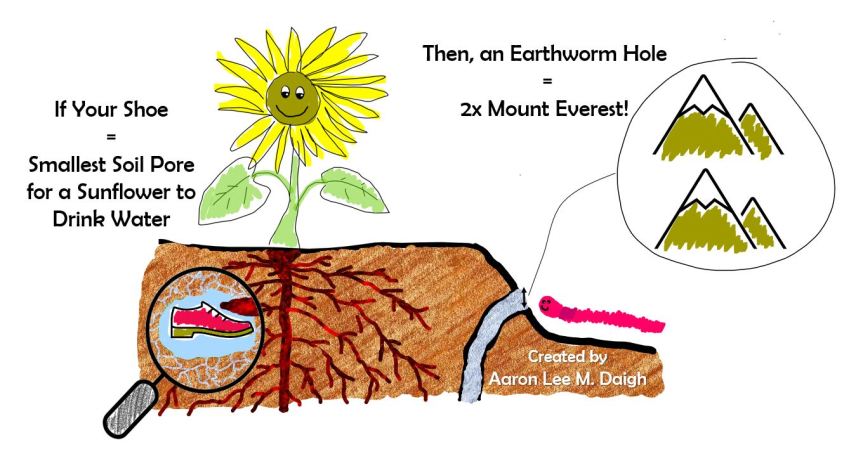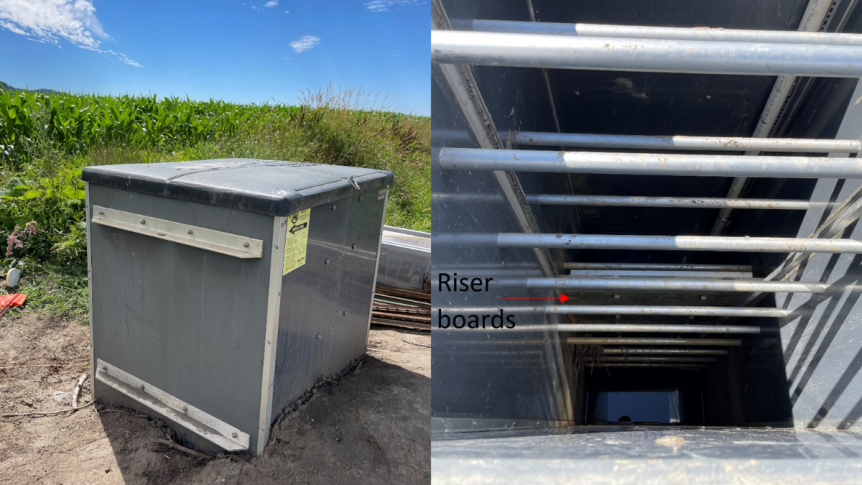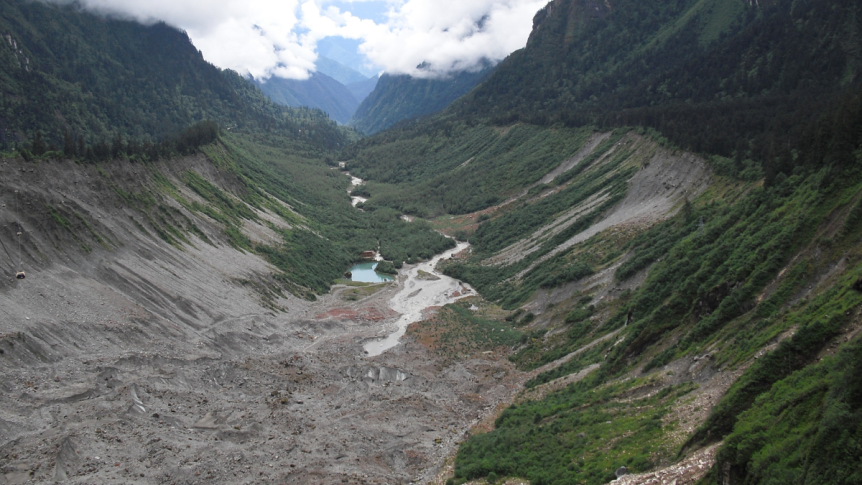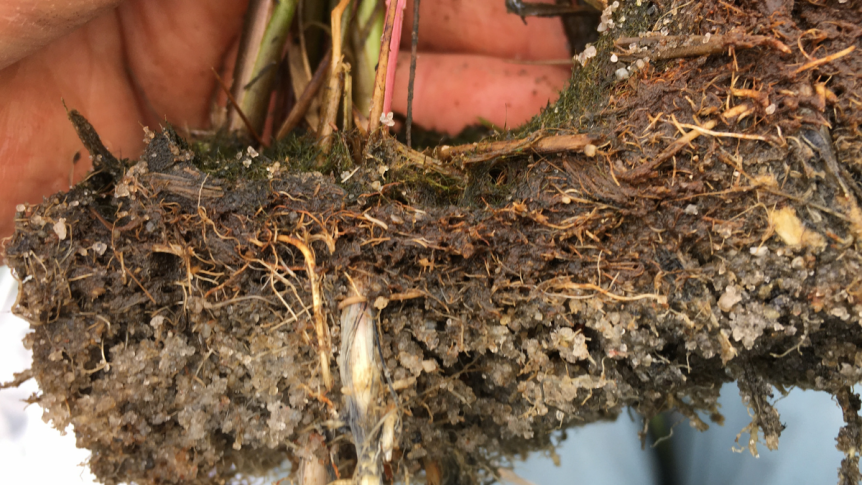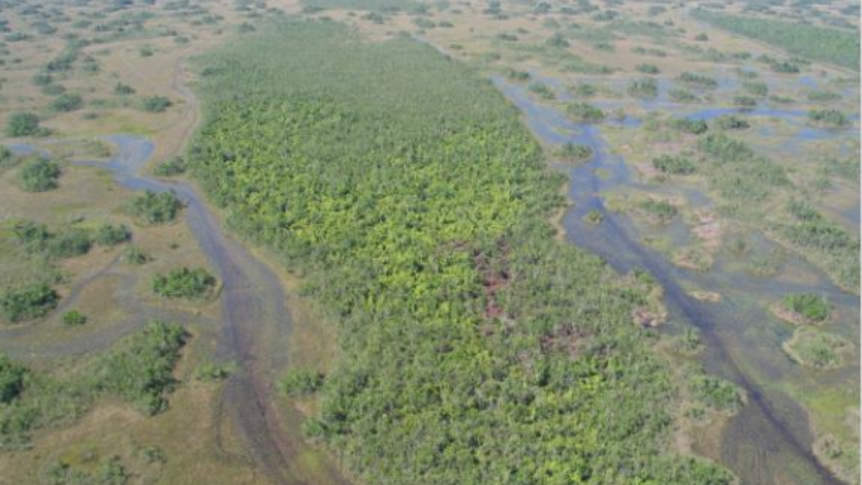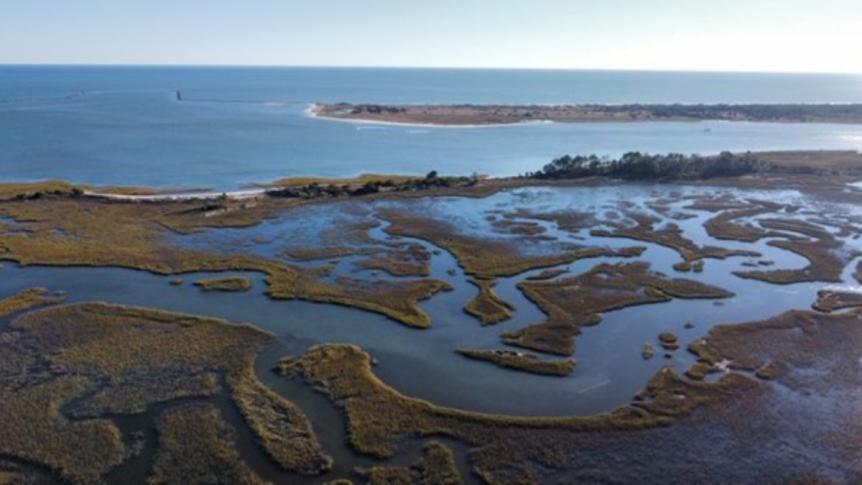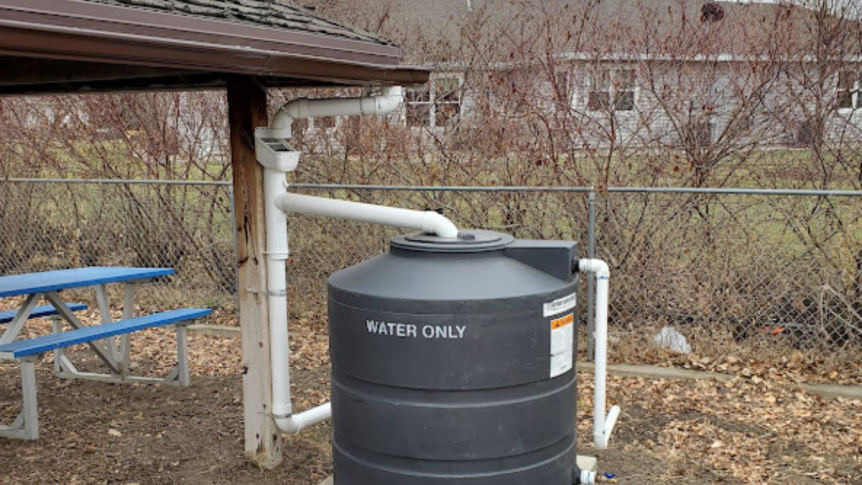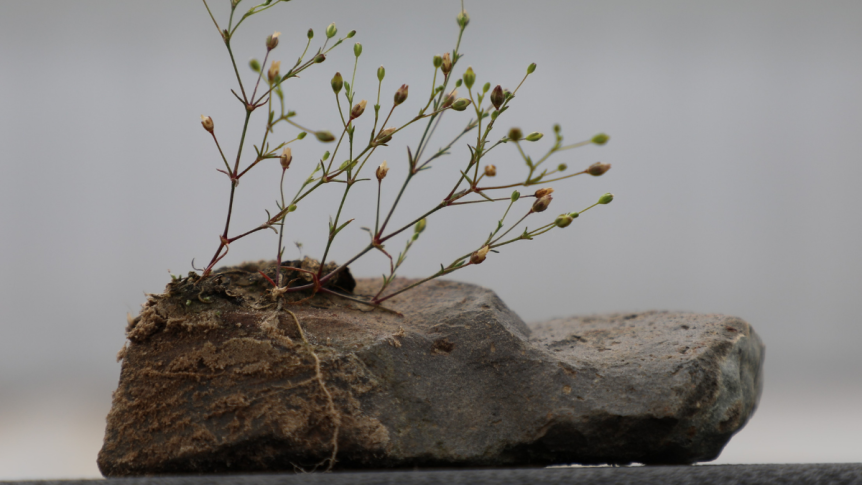Since the beginning of agriculture, people have recognized that a sufficient water supply is essential for crop production. The capacity of soil to store and supply water for plant growth is a fundamental agroecosystem service. It also is a soil health indicator. How well this soil water storage function performs affects water use efficiency, irrigation … Continue reading What affects how well soil holds water?
Category: Environment/Ecology
What are soil pores?
Pores are in almost everything. Look closely enough and you will find them in the wood and bricks of buildings, your skin, and the ground beneath. Soil pores are the spaces between Earth’s solid pieces (rocks, sands, silts, clays, and organic matter). A visualization depicting if the smallest pore a sunflower can drink water from … Continue reading What are soil pores?
What is controlled drainage and subirrigation?
One of the most important jobs for a grower is managing water. Some areas of the United States have plenty of rainfall throughout the growing season. Others do not. And still others have too much water at some times of the year and not enough water at others. All of these different farm fields need … Continue reading What is controlled drainage and subirrigation?
How did the forest develop at the Hailuogou glacier area?
Since the mid-19th century, increasing temperatures have resulted in the retreat of mountain glaciers on all continents. When glaciers retreat, they leave “glacial debris.” This debris serves as new substrate for soil and ecosystem development. This is often called “parent material” in the process of soil formation. The glacial debris is initially loose material, which … Continue reading How did the forest develop at the Hailuogou glacier area?
How do tidal marshes store carbon?
Tidal marshes are wetlands that are covered with incoming tidal water twice a day. These marshes may be as small as narrow fringe along a tidal creek or miles across in estuaries with adjacent flat landscapes. There are nearly 40 million acres of tidal marshes along the Atlantic, Gulf, and Pacific shores of the US. … Continue reading How do tidal marshes store carbon?
What is a soil carbon credit?
Agriculture is essential to ensuring global food security. However, the agricultural industry is also one of the largest sources of greenhouse gas emissions. Some agricultural practices can release carbon dioxide, nitrous oxide and methane into the atmosphere. Incentivizing climate-smart farming practices by creating “soil carbon credits” is one way to reduce the impact of agriculture … Continue reading What is a soil carbon credit?
What is a tree island, and how does it help with carbon storage?
We explored how coastal areas are capable of storing carbon at a great capacity in a recent blog. The Everglades in southern Florida are also known as a reserve of carbon storage. Some areas of the Everglades have “tree islands” and a recent study showed they are capable of storing more carbon and other nutrients … Continue reading What is a tree island, and how does it help with carbon storage?
What is blue carbon, and why is it important?
“Blue carbon” is a term for carbon captured by the world’s oceans and coastal ecosystems. Mangrove forests, tidal marshes, and seagrass beds are the main vegetated coastal areas that store vast amounts of blue carbon. It’s not really blue – it’s named after the color of the ocean. But blue carbon is an important tool … Continue reading What is blue carbon, and why is it important?
How does low-impact development help manage stormwater?
Cities can have many benefits when designed well, including reducing carbon imprints. Another way cities can improve their environmental impact is by using “low-impact development” with regard to water management. Also called “green stormwater infrastructure,” it provides planners with a toolbox of practices and approaches to manage water during rain events and snowmelt. On undeveloped … Continue reading How does low-impact development help manage stormwater?
How does young soil support plant life?
In order to grow well, plants need a place to grow, access to nutrients, and in most cases sunlight. A rich soil provides that home and a good supply of nutrients. But young soils have less to offer – yes, soils can have different ages ranging from hundreds to thousands to millions of years old. … Continue reading How does young soil support plant life?

